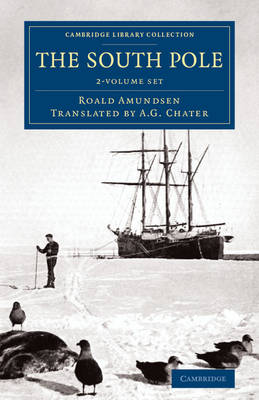Cambridge Library Collection - Polar Exploration
2 total works
Prior to his disappearance in the Arctic during an airborne rescue mission, the Norwegian explorer Roald Amundsen (1872-1928) had reflected in writing on his extraordinary career. First published in 1927 and reissued here in the English translation of that year, his autobiography discusses in straightforward style the numerous difficulties of his many expeditions, ranging from problems of finance and planning through to dealing with life-threatening danger and inevitable controversy. Generously acknowledging an 'old gentleman in Grimsby' for providing materials that helped him plan the first navigation of the North-West Passage, Amundsen credits painstaking preparation as the cornerstone of his success, especially in the conquest of the South Pole. His fuller accounts of these two expeditions are also reissued in the Cambridge Library Collection. Frank and focused like its author, the present work will reveal to readers the outlook and approach of a remarkable figure in the history of polar exploration.
On 14 December 1911, Roald Amundsen (1872-1928) and his Norwegian team became the first humans to reach the South Pole, a month before their ill-fated British rivals under the leadership of Robert Falcon Scott. Reissued here is the 1912 English translation of Amundsen's two-volume account of how this extraordinary and perilous feat was achieved. Illustrated throughout with illuminating maps and photographs, the text contains important details relating to matters of climate, equipment, diet, sledging and survival in forbiddingly cold conditions over uncertain terrain. Underpinning Amundsen's success, the use of dogs, skis and fur clothing made possible the dash to the pole and back without the loss of human life. While careful to present the expedition in the best light, Amundsen's work remains essential reading in the history of Antarctic exploration. Volume 1 covers the early stages of the expedition up to October 1911. Volume 2 covers the momentous journey to the pole and back.

